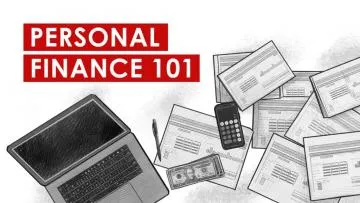Introduction
Building a solid financial foundation is essential for long-term financial well-being. A personalized financial plan can empower you to reach your financial goals, whether it’s buying a home, traveling, or simply feeling secure. In this guide, we’ll break down the essentials of financial planning and help you build a plan tailored to your unique life goals.
Step 1: Understand Your Financial Situation
The first step in financial planning is understanding where you stand. Gather information about your income, expenses, debts, and savings to see the full picture.
Key Components
Income: Include all sources of income, such as salary, freelance work, or passive income.
- Advertisement -
Expenses: Track your spending, including fixed costs (rent, utilities) and variable costs (groceries, entertainment).
Debts: List any debts, including credit cards, loans, and mortgages, along with interest rates.
Assets and Savings: Account for your assets, such as investments, savings, and valuable possessions.
Tip: Use budgeting apps or software to keep track of these numbers accurately.
Step 2: Set Clear Financial Goals

Having specific, measurable goals is the backbone of any financial plan. Goals should be both short-term and long-term.
Types of Goals
Short-Term Goals (6 months to 3 years): Emergency savings, debt repayment, and vacation funds.
Mid-Term Goals (3 to 5 years): Down payment for a house, car purchase, or educational expenses.
Long-Term Goals (5+ years): Retirement savings, child education, and wealth building.
Each goal should have a clear timeline and estimated cost. This helps you prioritize and stay focused on reaching each milestone.
Step 3: Build a Realistic Budget
Budgeting helps control spending and ensures you’re allocating funds toward your financial goals. There are several budgeting methods to choose from:
Common Budgeting Methods
50/30/20 Rule: Allocate 50% of your income to needs, 30% to wants, and 20% to savings and debt.
Zero-Based Budgeting: Assign every dollar a purpose, ensuring income minus expenses equals zero.
Envelope System: Set aside cash for each category to limit spending to what’s physically available.
Select a budgeting approach that aligns with your financial habits and stick to it.
Step 4: Establish an Emergency Fund
An emergency fund is essential for financial security, covering unexpected expenses like medical bills, car repairs, or sudden unemployment.
Emergency Fund Tips
Aim to save 3-6 months’ worth of living expenses.
Keep this fund in a high-yield savings account for easy access.
Start small, contributing consistently, and let it build over time.
Step 5: Reduce and Manage Debt
Debt can be a significant barrier to financial success. A proactive debt repayment strategy can help reduce financial stress and improve your financial stability.
Debt Repayment Strategies
Avalanche Method: Prioritize debts with the highest interest rates, saving money over time.
Snowball Method: Pay off the smallest debts first for psychological wins and motivation.
Consolidation: Combine multiple debts into one loan with a potentially lower interest rate.
Choose a debt reduction plan that suits your financial situation and allows you to make steady progress.
Step 6: Start Saving and Investing
Savings and investments play a vital role in wealth creation and achieving financial independence. Begin with small, consistent contributions and gradually expand as your financial situation improves.
Savings Tips
Automatic Transfers: Set up auto-transfers to savings accounts.
Short-Term Savings: Focus on accessible accounts, like money markets or high-yield savings.
Investment Tips
401(k) or IRA: Retirement accounts offer tax advantages and compound growth.
Stocks and Bonds: For long-term growth, explore a diversified portfolio.
Real Estate: If feasible, real estate can provide both rental income and asset appreciation.
Step 7: Protect Your Wealth with Insurance
Insurance is essential for safeguarding against unforeseen circumstances that could otherwise derail your finances.
Types of Essential Insurance
Health Insurance: Reduces the risk of overwhelming medical bills.
Life Insurance: Provides financial support for dependents.
Home and Auto Insurance: Covers major repairs or liabilities.
Disability Insurance: Protects income if you’re unable to work.
Step 8: Plan for Retirement
Retirement planning ensures you can maintain your lifestyle and financial independence in later years. Start as early as possible to maximize the benefits of compound interest.
Key Retirement Steps
Calculate Retirement Needs: Estimate future expenses and desired lifestyle.
Maximize Retirement Accounts: Contribute to 401(k)s, IRAs, or other retirement vehicles.
Social Security and Pension: Factor these into your income planning.
Step 9: Review and Adjust Your Plan Regularly
Life changes, and so should your financial plan. Regularly reviewing and adjusting your financial goals and strategies ensures you stay on track.
Tips for Staying on Track
Annual Reviews: Adjust your budget, goals, and investments at least once a year.
Life Changes: Update your plan if you experience significant life changes, like marriage, children, or a new job.
Financial Check-Ins: Quarterly or monthly reviews can keep you focused and motivated.
Personal Finance 101
Building a personalized financial plan is a journey, not a destination. By taking control of your finances, setting clear goals, and making intentional decisions, you’ll create a plan that reflects your unique needs and aspirations. Stick to the strategies outlined here, and remember that consistency is key to achieving lasting financial health.

